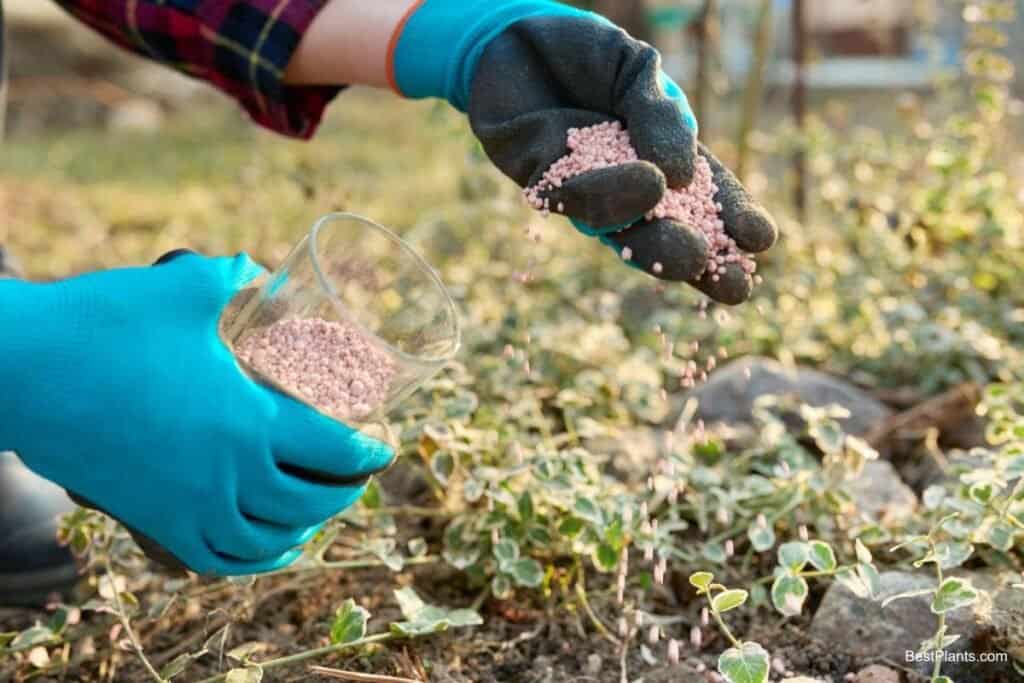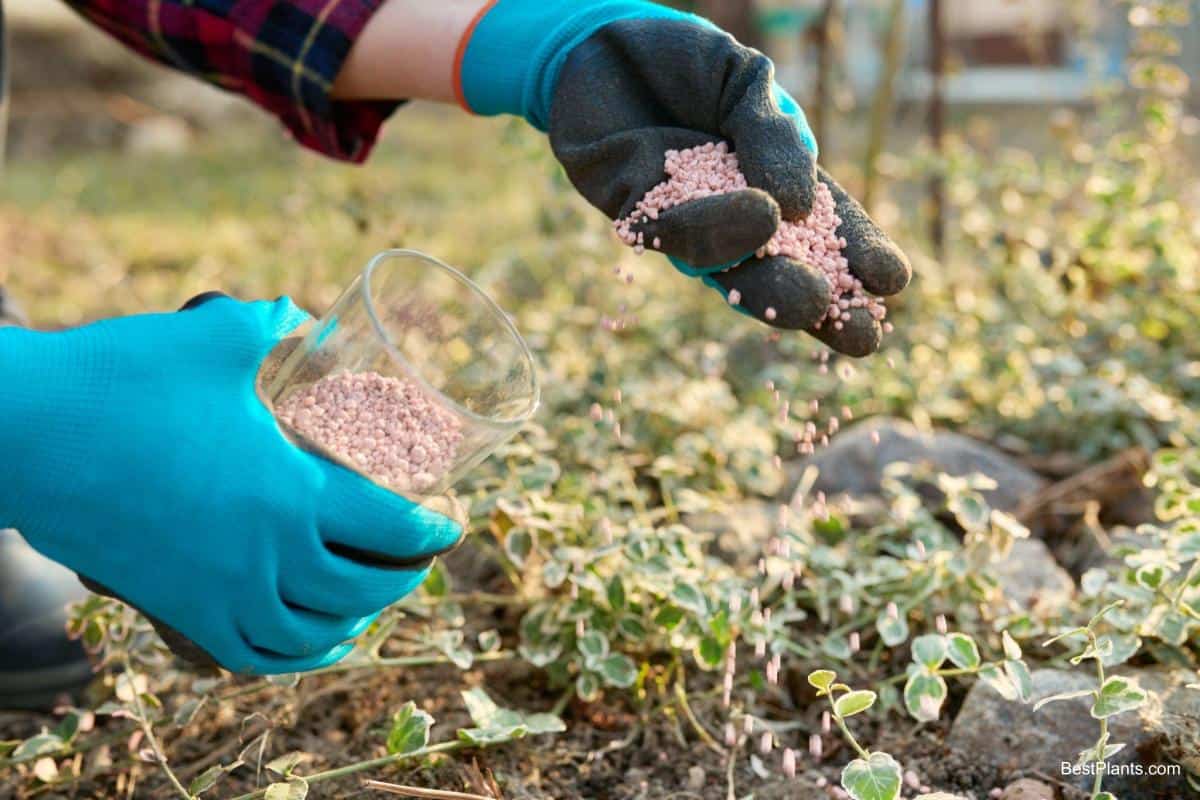Every gardener dreams of having a plot with soil rich in organic material to produce outstanding plants. Unfortunately, most garden soils lack this much sought-after substance, which maintains moisture, encourages root development, and keeps plant food from leaching out rapidly.

Soils high in organic content do not become packed or crusted, thus allowing rain to penetrate the ground quickly. The result is that cultivation is a pleasure instead of a chore.
Adding Organic Matter
Compost, leaf mold, well-rotted cow manure, peat humus, peat moss or rotted sawdust, shavings, and wood chips are easy-to-obtain materials for adding organic matter to garden soil.
A combination of several of these materials is more desirable than the use of any single one. A mixture of manure with leaf mold or peat humus that contains available plant food is hot when available.
Usually, it is easier to improve the soil by supplying the necessary organic materials than by changing it. The amount of organic material to use depends upon the quality of the ground.
If your soil is poor in quality, spread 3” to 5” inches of organic material over the surface and tlig it in thoroughly. Soil with a good structure and substance will need only an inch or two of organic material to improve it.
Improving Clay Soils
Heavy clay soils can be improved by spading in 2” or 3” inches of sandy loam to break up the line clay particles and adding organic material. Gravelly or sandy soil should have 3” or 4” inches of heavy topsoil spaded in to make it less porous. Nitrogen is needed to help speed up bacterial action, which causes the breakdown of raw organic matter.
In fertilizing broad-leaved evergreens such as rhododendrons, mountain laurel, and azaleas, they prefer highly acid soil. Castor pomace, cottonseed meal, or specially prepared mixtures containing aluminum sulfate should be used to maintain the required degree of acidity.
If plants appear to have pale green foliage, quickly available nitrogen may be supplied by a light application of ammonium sulfate. Superphosphate is beneficial when using castor pomace and cottonseed meal.
It induces heavier budding, and I have found that flowers have better color. Feeding broad-leaved ground covers such as pachysandra and myrtle changes the leaf coloring to a bright green and develops heavy root systems. Fertilization of all broad-leaf evergreens should be done before July so that the new growth will harden properly for wintering.
Yews show the effects of fertilizer by developing heavier and greener needles, and the plants maintain their older hands longer. New growth is more serious, and fertilizer encourages new development along the stems at the base.
Arborvitaes may be improved to the point where they are striking in appearance. The foliage color becomes dark and shining, and new growth is encouraged within the plant structure so that the plants become full-bodied.
Feeding Evergreens
Yews, arborvitae, and false cypress may be fed safely with organic and chemical fertilizers. A combination of the chemical fertilizers to give them a quick feeding and organic fertilizers to maintain fertility through the summer and fall months will prevent excessive foliage dropping during the autumn.
The heavy dropping of old foliage is nature’s way of reducing that the plants cannot support. Heavy watering during late summer also helps to reduce excessive shedding of vegetation, especially when summers have been dry.
We think of the spreading junipers and the various upright varieties as plants that grow in dry, poor soils and do not require feeding. However, if you want to grow them at their best, with rich coloring, feed them. With favorable soil conditions and feeding, junipers become incredibly dense.
Growth is encouraged within the plant, and the centers of the spreading varieties do not become bare of foliage, leaving the stems exposed. Fertilize juniper with a chemical fertilizer plus a heavy feeding of organic plant food in early spring. All needle type evergreens will stand more feeding than is generally sup-
Posed, mainly organic fertilizers such as castor pomace, bone meal, and commercial fertilizers.
Flowering shrubs should be fertilized lightly in early spring since heavy fertilizing may induce overgrowth at the expense of (lowers. However, Lilacs require heavy feeding to increase the size of flower clusters and heavy budding.
Plants are benefited from agricultural lime, bone meal, and superphosphate. Rich organic fertilizers applied in early spring will induce a robust and sturdy growth. Plants must be kept well watered during dry periods in summer.
Attention to Perennials
It is possible to grow superior, hardy perennials in ordinary soils supplied with organic material plus fertilizers. Too much emphasis has been placed on the depth of soil preparation. Many perennials are shallow-rooted.
If one desires to grow peonies, and other deep-rooting kinds, the locations where these are to be grown require deep preparation. However, the depth of a spade is generally sufficient for most perennials spading in 2” or 3” inches of rotted manure, leaf mold, or peat humus. Drainage should be carefully considered.
To give the plants a start, the soil should be fertile by using from three to five pounds of good organic fertilizer plus a general chemical fertilizer such as 5-8-7 per 100 square feet. Hone meal and superphosphate are both excellent for additional feeding. The dried manures are weed-free and make good topdressing.
Feeding Chrysanthemums
Hardy chrysanthemums are heavy feeders. New plantings should be kept pinched back until July to induce branching. If plants are allowed to become stunted from lack of plant food, they never develop into specimen quality.
Fertilizer is best applied at planting, mixing it thoroughly with the soil in the upper 6” inches. Use organic fertilizers for this purpose. When planting has been done, spread chemical fertilizer in circles around the plants. If a combination of chemical and organic fertilizers is applied early, there is no need to use a second application.
44659 by R. E. Newell
